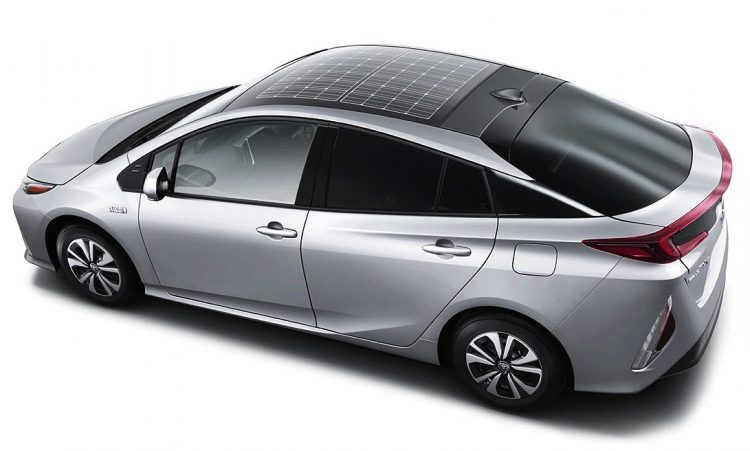Toyota has announced some sweeping changes for its next-generation eco-warrior, the new plug-in version of the Prius, including the introduction of a solar panel on the roof.
 Toyota has also developed a more efficient 8.8kWh battery pack, which can be fully charged in two hours, and offers 50km in purely EV mode and an almost inconceivable 1.4L/100km economy figure.
Toyota has also developed a more efficient 8.8kWh battery pack, which can be fully charged in two hours, and offers 50km in purely EV mode and an almost inconceivable 1.4L/100km economy figure.
The choice to install a solar panel on the roof now allows the 8.8kWh battery pack to be charged on the move, while parked, and, according to Toyota, increases the Prius’s efficiency by up to 10 per cent. The solar panel will also supply power for auxiliary functions like air-conditioning, lights, and windows.
On a similar note, Toyota has revised the 1.8-litre four-cylinder powertrain for improved economy, and along with a coefficient of drag of just 0.24, adds a 40 per cent increase in overall vehicle efficiency.
Inside, there’s a 4.2-inch TFT display, a new wireless phone charging dock, and a decrease in road noise entering the cabin thanks to new sound insulation.
Unfortunately for Australian and US customers, current design regulations do not allow Toyota’s design to enter the fleet, meaning at this stage only Japanese and European markets are set to take deliveries, initially.
The main problem is that the solar panels utilise reinforced glass sheeting, which apparently doesn’t meet design regulations in the regions.
Chief Prius engineer Koji Toyoshima said that Toyota hasn’t developed photovoltaic cells that won’t break dangerously in an impact. However, Toyoshima did confirm that Toyota is working on an appropriate modification for sale here and in the US. Toyoshima said:
“We would like to introduce this, at least in the lifetime of the current model. It should be possible to do a lot of charging this way in places like California or Arizona.”
Toyoshima also gave us one of the clearer signals that Toyota may be moving toward developing its own purely electric vehicle, saying;
“We are using the EV-like plug-in-hybrid as a step to using more electricity in the future.”
Toyota’s endeavours in the world of solar panels was first covered in a 2009 report from Nikkei newspaper, where it remained in development. Other manufacturers like Saab have too previewed concepts with solar panels, like its 9-X BioHybrid concept which was unveiled in 2008 at the Geneva Motor Show, and the Nissan LEAF with its optional solar panel on the rear spoiler.
